The choices you make in Until Dawn have more far-reaching consequences than in most other survival horror games: the butterfly effect feature it so heavily relies on is highly effective, adding weight to seemingly innocuous choices and creating a game that feeds deeply into player paranoia of making the wrong choice. Couple this system with the game's tongue-in-cheek exploitation of slasher film tropes--including over-the-top gore and flirty teenagers--and you have an enjoyable experience controlling you own '80s horror film parody. Until Dawn is a thoughtful experiment in how far you can go with multilayered player-driven narrative games, and despite some ugly visuals, delivers an engaging experience where story and controls meld for powerful meaning.
The game's plot follows the classic slasher film recipe: eight teenagers get together on a snowy mountain far away from their parents and civilization. The get-together falls on the one-year anniversary of the disappearance of their two friends--twins Hannah and Beth--and the makeout party soon turns into a complete disaster. The group's clashing personalities force them to break off in couples to do their own thing. But we all know what happens to groups that split up in horror movies; within an hour, everything goes to hell as a feral creature and a masked madman begin terrorizing the teens.
Between each in-game chapter, you visit a mysterious psychiatrist in an office. You, controlling an unknown person, answer the analyst's questions, all of which revolve around what scares you and how you feel about the characters. You'll be asked to choose between spiders and snakes, needles and gore, ghosts and zombies. This is the game's way of setting up the horror story you'll experience, placing needles or knives in the hands of attackers and throwing out elements the program knows you're frightened by. It feels a little too out in the open for a game that so subtly weaves your choices into the narrative, but I didn't mind this forwardness in the grand scheme of things. Until Dawn's setup is wonderful enough to overlook it.
These psychiatrist visits are the most obvious examples of Until Dawn's biggest feature: the butterfly effect. Small choices will have major consequences in future events. They aren't one-offs, either: a choice you make in chapter one presents a difficulty in chapter two, and depending how you solve that difficulty, further chapters will offer you different tools or different interpersonal conflicts. Choices made in chapter one determine events that branch with the next decision and again with the next, creating a large number of narrative paths and outcome.
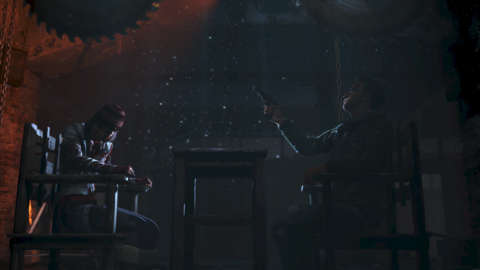
I played through Until Dawn multiple times, and I saw new scenes and learned new things the second and third time around. By attaching the branching narrative to not one but eight separate characters, you have a massive playground on which to control your own horror story.
The game expertly keeps track of and broadcasts these decisions, too. When a big choice is made, the screen will display a "butterfly status update." Digging into the menu, you can find which actions will come back to haunt you later. And when an event happens as a result of that action, the game tells you. By using Until Dawn's system, I was able to figure out that who I gave a gun to in chapter three would determine who got hurt in chapter eight, and how others would react to the attack. Choosing to not side with one guy's girlfriend in chapter one resulted in her being derogatory and snide to him for the rest of the game, which in turn affected the choices the game gave him to assist her. She got meaner, and he could either take it or fire back. This dynamic would affect how they escaped a situation in the second half of the game. The level of intricacy and humanity to these interactions impressed me. It's complex and brilliant, and during repeat playthroughs I constantly referred back to the menus to make better decisions.
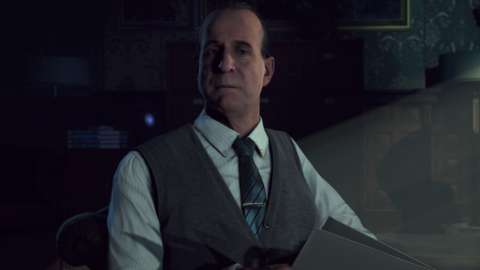
And once you make these choices, there's no rewinding. Only when you beat the game can you go back to the beginning or restart from later, individual chapters. The aggressive save feature prevents you from undoing anything, forcing you to live with the choices you make. It's a courageous move locking players into choices in such a far-flung branching narrative, but it's a move that makes the narrative--and your experience controlling it--more powerful.
Less than an hour in, I was already hoping certain characters would just die already. But when my favorite character died halfway through, I found it hard to continue. Until Dawn does that to you: each character has a distinct, fleshed-out personality and you'll find you empathizing with some of them. With their fate completely in your hands, it's difficult not to get wrapped up in the moment-to-moment when protecting your chosen ones.
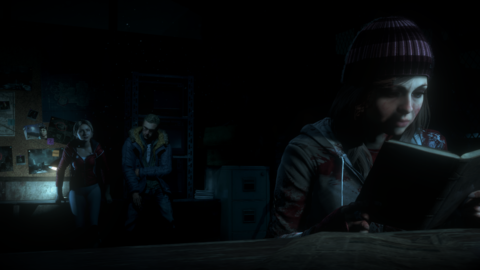
As you explore the snowy mountainside, you do some light environmental puzzle solving, such as finding tools to start a fire or turn on the water heater. There is very little in the environment you can interact with; a glowing silver light indicates items you can touch. It feels like you're in rails for most of the game, which is somewhat disappointing given how tantalizing the game's snowy woods and creepy cellars are for exploration.
The objects you can pick up and examine are the most interesting, as they unlock narrative clues and warnings. They reveal information about your missing friends, the murderer stalking you, and other mysteries of the area. Each clue seems unimportant on its own, and after a while I felt like they were just "gamey" objects taking up space, just meaningless pieces to collect and fill an in-game trophy case--until, like I mentioned before, they suddenly weren't. I found myself lingering in the game's menus trying to string hints together, matching clues to butterfly effect updates to shed light on the story.
You also collect totems, which are wooden objects that reveal the future. Totems show character deaths and hidden dangers that can happen down the line. I referred back to them throughout my playtime to inform my decisions. If I saw a character's body in flames, I made more careful choices when she picked up a torch. When one guy investigated a cliff, all my decisions got him away from the edge when I remembered a totem of him falling to his death. Like most things in Until Dawn, the totems look gimmicky until suddenly they aren't, and you find yourself constantly mulling their warnings.
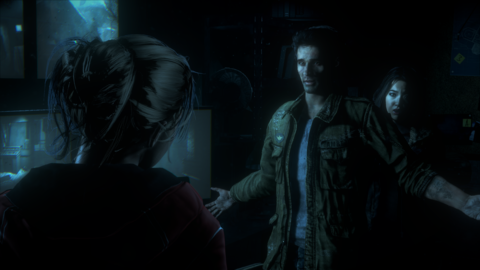
Lengthy action sequences are strings of quick-time events. The time to react is incredibly short and requires precision, giving you--like the teens trapped in this horror story--very little time to react. Missing a command results in characters stumbling as they run, tripping over objects, or even missing a rock ledge and falling to their doom. When characters stumble and waste precious time during quick time sequences, even once, whomever they are racing to save could die. It's a great way to hold onto immersion, keeping you tense and adding heavy consequences to every missed button.
My absolute favorite feature of Until Dawn is its use of the DualShock 4 controller's gyroscope feature. Some PlayStation 4 games tend to shoehorn gimmicky uses of the controller's additional features, but Until Dawn uses the gyroscope in a way that's just a little too perfect for the slasher film aesthetic. One command requires you hold the controller still while hiding from an attacker. You are frequently given the option to run or hide; in the latter, if you jostle the controller even a little, you'll be caught, and like every other decision in this game it could mean death. During these segments I began holding my breath--it's the best way to keep that controller still--and it pulled me deeper into the experience.
The game's narrative playground is fun to navigate, but the visuals are occasionally disappointing. The camera frames scenes at odd angles, such as up from the ground or down from a ceiling corner, and sometimes ruins the action when you can't see where you need to walk to. Characters will cross a bridge and ascend a stairway, and the camera will stop, letting the characters walk out of frame. Angles often obscure pathways in caverns and hallways that lead to hidden clues. I spent a lot of time walking on the edges of the screen, as I wouldn't have found some clues otherwise.
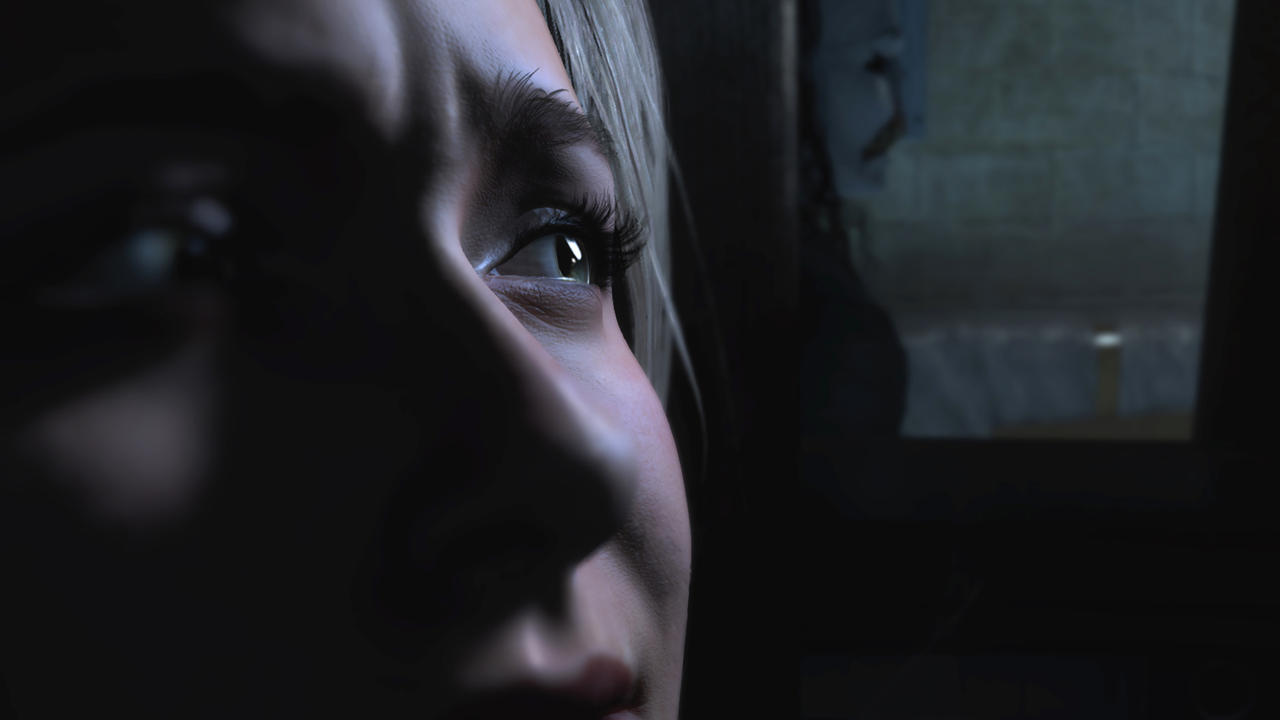
The acting is excellent; I empathize when the characters are feeling flirty or scared or sad, thanks to a swathe of believable, poignant vocal performances. But character faces cross into the uncanny valley, and body motion and some facial expressions remain rigid and awkward. The motion capture for grimaces didn't translate well into Until Dawn, with long stretches of time where a character leaves their mouth wide open or teeth bared. Occasionally character mouths over enunciate each word and phrase, making dialogue look unnatural, and unsettling. It's unfortunate because the vocal acting is so superb. Until Dawn's all-star cast nails the terrified teenager thing, down to their tone and reactions, and because of this I tended to wave off the weird mouth stuff. On top of it all is a chilling soundtrack by Dead Space composer Jason Graves, which crescendos and subsides to highlight panic, terror, and anguish.
I didn't expect to have so much fun with Until Dawn, and the depth with which my choices mattered and affected the final outcome encouraged repeat playthroughs. The visuals can be wonky at times, but in the end Until Dawn succeeds in being a thoughtful use of familiar mechanics, a great achievement in player-driven narrative, and a horror game you shouldn't miss.



